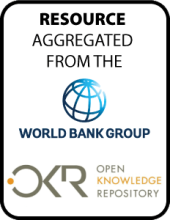Land Library
Welcome to the Land Portal Library. Explore our vast collection of open-access resources (over 74,000) including reports, journal articles, research papers, peer-reviewed publications, legal documents, videos and much more.
/ library resources
Showing items 1 through 9 of 16.Species-rich semi-natural grasslands have rapidly declined and become fragmented in Northern Europe due to ceased traditional agricultural practices and animal husbandry.
Es evidente que a nivel de la historia, ha estado presente la dificultad de comprender el mundo rural; ligado esto, siempre a miradas de desarrollo que se plantean a nivel de región, asociadas a las estrategias de las grandes ciudades y a su crecimiento poblacional.
Livestock are kept for a wide range of purposes in Africa, and there is considerable diversity in animal husbandry. Among the most important advantages in keeping animals is their contribution to maintaining and even improving soil fertility.
Not only rabbits and guinea-pigs but sheep, goats, cattle and pigs also play a crucial role in the food and income situation of countless city-dwellers world-wide. However, when people and animals live in such close proximity, health risks are inevitable.
Rwanda is experiencing its best
growth performance since independence. With average annual
GDP growth rate of 8 percent and 5.2 percent for
agricultural GDP from 1999-2012, Rwanda s recent growth is a
This case study, one of six evaluations
in a series of country case studies, aims to understand the
implementation of the 1991 Forest Strategy in World Bank
operations and to obtain the views of the various
Latin America missed opportunities for
rapid resource-based growth that similarly endowed
countries-Australia, Canada, Scandinavia-were able to take
advantage of. Fundamental to this poor performance was
La presente Tesis profundiza, a partir de un enfoque de tipo etnográfico, en las dimensiones que hacen a lo laboral y familiar en un grupo de unidades familiares dedicadas aún al tambo en medio de un importante retroceso de la lechería a pequeña escala.






